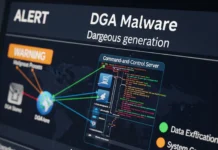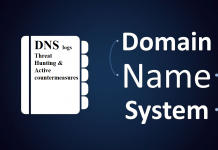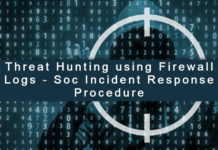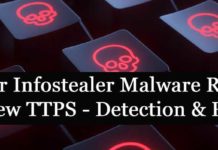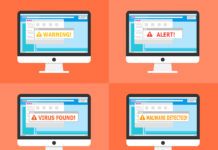Introduction
In today’s volatile threat landscape, organizations face growing pressure to not only detect risks but actively manage them. From data breaches and ransomware to supply chain disruptions, the nature of digital and operational risk has evolved. Yet, many leadership teams continue to equate visibility with control. The reality is more complex. Boards are now realizing that exposure management must go beyond dashboards—it must become a core pillar of strategic decision-making. When threats can halt operations, impact brand trust, and incur regulatory penalties, managing exposures becomes a board-level priority, not just a technical one.
What Is Exposure Management?
Exposure management is the proactive identification, assessment, and mitigation of potential risks—cyber, operational, financial, or reputational—that could harm an organization, ensuring continuous protection, business resilience, and informed decision-making beyond traditional risk management.
Definition and Scope
What is exposure management ? It refers to a proactive, strategic process of identifying, analyzing, and mitigating potential exposures—digital, operational, financial, or reputational—that could harm an organization. Unlike traditional risk management, which often reacts after events occur, is forward-looking and continuous. It spans multiple domains:
- Cybersecurity (attack surface, misconfigurations, zero-days)
- Supply chain (third-party vulnerabilities, geo-political disruptions)
- Financial (fraud exposure, regulatory compliance gaps)
- Operational (system downtime, infrastructure failure)
Key Stakeholders: Security, Operations, Finance, and the Board
Effective threat exposure management requires cross-functional collaboration. CISOs may lead the technical response, but CIOs, CFOs, COOs, and board directors must be aligned. Finance needs to quantify potential losses, operations must prioritize critical systems, and leadership must weigh risk appetite against business goals. In this model, exposure management software plays a pivotal role by centralizing data, automating insights, and enabling action across departments.
Visibility ≠ Control
Common Misconceptions at the Leadership Level
Boards often believe they are well-informed because they receive frequent reports or security updates. But visibility is not control. Knowing about a vulnerability doesn’t mean it’s being managed. Many organizations fall into the trap of “check-the-box” security, where visibility tools exist, but exposures persist.
Why Dashboards and Alerts Aren’t Enough
Security teams rely heavily on dashboards for monitoring, yet these tools often produce overwhelming volumes of alerts. Without context, prioritization, or accountability, alerts lead to fatigue and missed action. Continuous threat exposure management demands a shift from passive observation to real-time, prioritized decision-making.
Examples of Visibility Gaps Leading to Inaction
- A critical zero-day alert is buried under hundreds of low-priority ones
- Shadow IT introduces unmanaged assets into the network
- A third-party vendor has known weaknesses, but contracts continue unreviewed
- Cybersecurity teams detect risks, but business units fail to act without incentives
These examples show how exposure vs vulnerability is not just semantic. Vulnerabilities may exist system-wide, but exposures are the ones most likely to be exploited—and need urgent action.
The Board’s Role in Exposure Management
The board’s role in exposure management is to set risk tolerance, align exposure metrics with business impact, ensure accountability, ask strategic questions, and oversee frameworks that transform risk visibility into actionable control measures.
Setting Strategic Risk Tolerance
Boards must define what level of exposure is acceptable relative to business objectives. Is it tolerable to be exposed to a 5% risk of ransomware disruption? Or would a 1% risk already warrant reallocation of budget? This is where the risk management framework must integrate with exposure management insights.
Aligning Exposure Metrics with Business Impact
Instead of abstract severity scores, exposure data must tie back to outcomes. For example:
| Exposure | Impact | Priority |
| Critical SAP server exposed to internet | Financial disruption | High |
| Minor website CMS vulnerability | Marketing inconvenience | Low |
By aligning technical data with business outcomes, boards can better direct resources and attention.
Asking the Right Questions
Board members don’t need to be cybersecurity experts, but they must ask probing questions like:
- Are we managing exposures on crown-jewel assets?
- How are we prioritizing remediation across teams?
- Are exposures being tracked through our risk management process?
From Insight to Action: Building the Strategy
Identify Exposure Types and Data Sources
The first step is mapping all potential exposures across digital and physical domains. These can be sourced from:
- Vulnerability scanners
- Asset inventories
- Threat intelligence feeds
- Supply chain audits
- Compliance reports
Map Exposures to Business-Critical Assets
Mapping exposures to business-critical assets prioritizes risks based on their impact on essential operations. By linking vulnerabilities to key functions, organizations focus resources on urgent threats while delaying lower-impact issues responsibly.
Define Control Mechanisms and Accountability
Who owns which exposures? Is it IT, security, finance, or operations? Without accountability, remediation stalls. Define playbooks and escalation paths to ensure each type of exposure has an owner and a resolution path.
Measure and Monitor What Matters
Use KPIs that drive action:
- % of exposures remediated in 30 days
- MTTR (mean time to respond) for critical exposures
- Number of repeat exposures per business unit
- Risk reduction score via exposure management software
Aligning Teams and Tools
Aligning teams and tools ensures seamless collaboration across IT, risk, operations, and finance by integrating exposure management into workflows and selecting platforms that provide both comprehensive visibility and effective control.
Integrating Exposure Management into Enterprise Workflows
Exposure management should not be a side project. It must integrate into ticketing systems, incident response workflows, and executive reporting. This creates a closed loop where exposure is identified, acted upon, and tracked to completion.
Breaking Silos: IT, Risk, Ops, and Finance Collaboration
True risk reduction requires team integration. IT and security find the problem. Ops fixes it. Finance funds it. Risk tracks it. Leadership enforces it. Use governance models to unify goals and eliminate finger-pointing.
Choosing Platforms That Deliver Both Visibility and Control
Not all platforms are equal. Look for exposure management software that:
- Offers continuous scanning and context-aware alerting
- Prioritizes exposures based on business risk
- Enables automated workflows for resolution
- Integrates with governance tools and board dashboards
Reporting to the Board
Reporting to the board involves clear, actionable exposure insights that simplify risks and build confidence in the organization’s risk posture.
Simplifying Complex Risk Data
Simplifying complex risk data involves translating technical findings into clear, business-focused language. By removing jargon and focusing on real-world impacts, such as operational delays or revenue loss, leaders and boards can quickly understand risk implications, prioritize actions, and make informed decisions that directly support organizational resilience and strategy.
Making Exposure Insights Actionable
Making exposure insights actionable means converting complex risk data into clear, business-focused intelligence. By presenting trend reports, remediation backlogs, and impact summaries aligned with strategic KPIs, leaders can prioritize actions, track progress, identify gaps, and make informed decisions that strengthen resilience and reduce organizational risk effectively.
Building Confidence in Risk Posture
Ultimately, boards want assurance that the organization is not flying blind. A mature risk management and exposure management strategy builds trust by showing leadership not only understands risk but actively controls it.
Conclusion
In a threat environment where time-to-exploit is shrinking, organizations can no longer afford to treat exposure as an afterthought. From the boardroom to the security operations center, exposure management must evolve from passive observation to dynamic control. By asking the right questions, investing in the right tools, and aligning teams under a unified strategy, boards can confidently guide their organizations from visibility to control.





